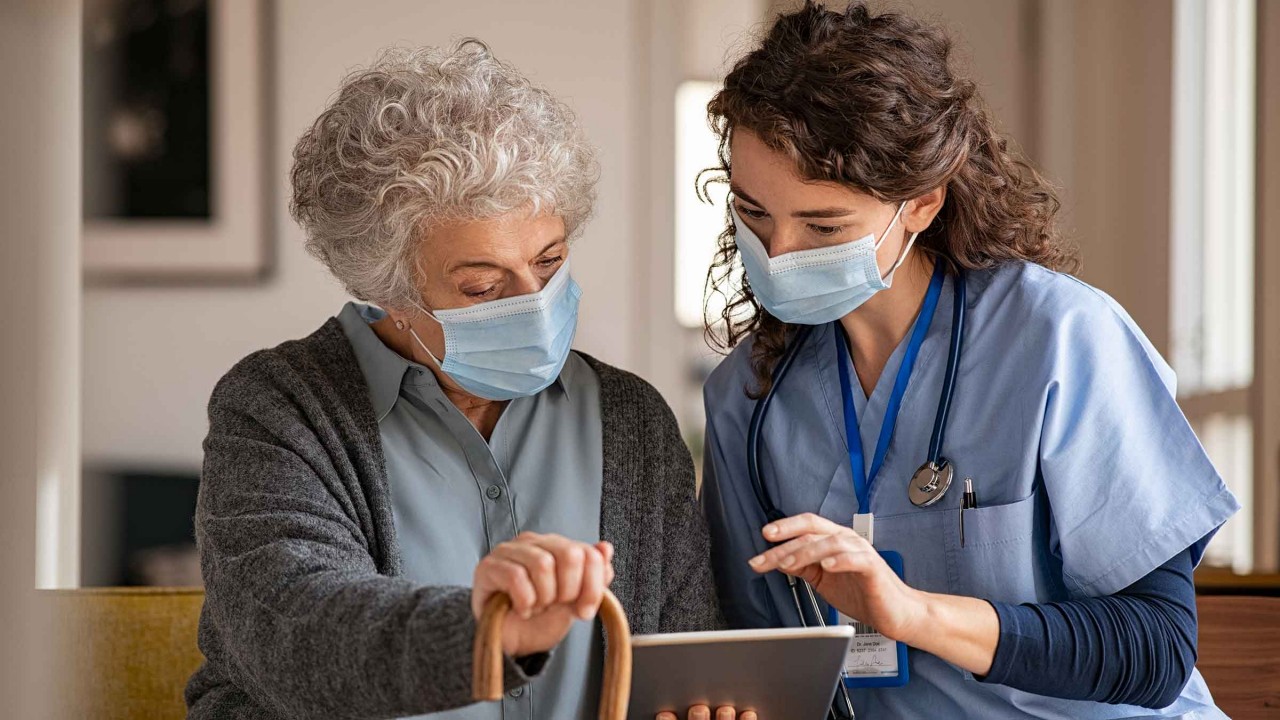Navigating your health from home is just a call, click or doorbell away

You feel it again — that nagging back pain. Or maybe it’s an earache that won’t go away. With COVID-19 restrictions making many of us reluctant to leave the comforts of home, it’s good to know there are other ways to see your health care provider and get your medical questions answered.
Making digital connections with your health care provider has become more common – and many older adults are taking advantage of this option. In the first three months of the pandemic, 1 in 4 older Americans completed a telehealth visit. That far exceeds the 4% of people over 50 who reported they had ever had a virtual visit with a physician in a 2019 survey.
Most health plans now offer choices on how and where to access medical information and care. That convenience is important – but knowing we may be able to lower our risk of infection by avoiding public places may be even more valuable now.
Consider these alternatives for getting the answers you need for health concerns
Phone lines staffed by nurses
Many health plans offer access to a telephone-based support line staffed 24/7 by registered nurses – often referred to as “24/7 nurse lines” or “nursing hotlines.” The nurses take note of your symptoms, and together, you can discuss next steps. There is typically no additional charge to use this service.
Online or virtual office visits
Some Medicare plans allow you to visit with your doctor without leaving your living room; in fact, Medicare has expanded coverage of telehealth services for the duration of the pandemic. During a virtual visit, the clinician can see and talk with you via your cell phone, computer or tablet. These visits sometimes even allow physicians to bring in specialists, also virtually, if needed.
While in-office visits may still be the best option when it comes to serious illnesses, virtual visits may work well for follow-ups and for more common illnesses and injuries like colds, sprains, rashes, and so on. In some states, online doctors can write and submit prescriptions after a virtual consultation. If covered, these visits may be subject to a copay or coinsurance. In 2021, all of UnitedHealthcare’s Medicare Advantage plans offer $0 copays for telehealth visits.1
In-home visits by a health care practitioner
Gone are the days when doctors routinely made home visits, but some providers still do offer this convenient service. Today’s in-home clinicians are often nurse practitioners (NPs) or physician assistants (PAs) who spend 45 to 60 minutes with each patient. They review your health history and current medications, perform a physical exam, offer health education and coordinate care with your primary care provider. The visit allows the health practitioner to spend a great deal of time with you in an environment where you are comfortable. These appointments are so popular that UnitedHealthcare’s HouseCalls program completed more than 1.6 million visits for its members in 2020.
The right care in the right place at the right time
Staying on top of your health has never been more critical, and the options available to us today can help make that more convenient than ever.
Of course, if you have a serious illness or injury, do not hesitate to go to the emergency room or urgent care, where care teams are working to ensure your continued health and safety. And whatever you do, don’t delay or skip critical in-person preventive visits and screenings, like colonoscopies or mammograms, which may have unintended consequences – especially for older adults.
But the next time you want to speak with someone about a medical issue from the safety of your home, pick up your phone or tablet, get comfortable and dial up the personalized support you want.
To find a UnitedHealthcare plan that offers these services, visit uhc.com/medicare.

